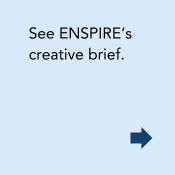- Our Research
- Research Areas
- Addictions
- Aging & Geriatrics
- Behavior Change
- Biostatistics
- Cancer
- Cardiovascular Health
- Child & Adolescent Health
- Chronic Illness Management
- Health Informatics
- Health Services & Economics
- Healthy Communities
- Medication Use & Patient Safety
- Mental Health
- Obesity
- Preventive Medicine
- Social Determinants of Health
- Vaccines & Infectious Diseases | COVID-19
- Our Scientists
- Collaborate with Us
- Our Publications
- Research Funding Sources
- Research Areas
- News and Events
- Get Involved
- About Us
- Live Healthy
Producing and Sharing Your Codesign Projects
The ENSPIRE Playbook
Setting the Stage | Mapping and Organizing Your Codesign | Conducting Your Codesign | Producing and Sharing Your Codesign Projects | Evaluating Your Codesign | Recommendations Based on Lessons Learned | About the ENSPIRE Study
 Make decisions about design and production
Make decisions about design and production
![]()
Identifying options and selecting products
- To what extent will you defer to codesign teams about which products they want to design?
- What parameters, if any, do you want to set in advance? Parameters could be related to your budget, the feasibility of sharing particular types of products with the target audience, prior knowledge of the target audience’s preferences regarding types of products or ways of accessing information, or prior knowledge about the effectiveness of particular products based on earlier projects or research.
Editorial and production assistance
- If there will be written products, who will do the final writing and editing to avoid errors?
- Do you need a subject matter expert to review the accuracy of the information provided in written products?
- Will you have professional production support for any materials that are created through codesign? If so:
- What is your plan and timeline for collaborating with the production team?
- What codesign curriculum materials, such as a creative brief, do you need to prepare with their help to ensure codesigners can provide what the production team needs and vice versa?
- What training do you need to provide or what conversations do you need to have with the production team to ensure they respect the codesigners’ autonomy and creativity?
Matching products to target audience
- What do you know about how and where your target audience accesses information?
- What format works best for the kind of information you want to share and for your objective in sharing the information?
Using copyrighted material
- Are there copyright issues you need to consider? This can be particularly important when selecting music.
Production timeline considerations
- What is your timeline for production? How does that timeline influence the types of products your codesign teams can develop?
![]()
ENSPIRE identified products, team members, and support staff to help with production
Identifying options and selecting products
We offered codesign teams a menu of types of products based on our production timeline, budget, and project goals. These included posters, brochures, videos, and giveaway options (such as stress balls and hand sanitizer). As part of exercises conducted during codesign sessions, teams devised their messages and selected products they felt would be most compelling to their communities.
Editorial and production assistance
The communications production team developed a creative brief for codesign teams to fill out to inform the production team about what to produce. The creative brief asked the codesign teams to provide the following information and materials:
- Production schedule
- Text/storyboard (keeping in mind certain word limits)
- Color preferences
- Photos, videos, and music from iStock if desired
The creative brief also included templates for the different products. These templates served as “guardrails” that teams could follow when developing their ideas so that the codesign products could be produced quickly and within budget.
Matching products to target audience
We spent time during codesign sessions discussing where long-term care staff get information, and what is trusted. This informed the selection of products. A back-and-forth conversation between co-facilitators and codesigners in each group narrowed the selection of which products to finally create.
Using copyrighted material
In ENSPIRE, we used publicly available background music. We were also careful to ask codesigners to complete photo releases for any personal photos they chose to include in final products.
Production timeline considerations
When creating giveaway items (stress balls, hand sanitizer), we considered not only how long production would take to develop materials, but also what factors could impact production, such as the availability of the base products. This was particularly important given potential supply chain issues.
 Share your products
Share your products
![]()
- What kinds of conversations can you have with partners way in advance so you can adequately plan for sharing and disseminating your codesign products?
- What is the call to action for your audience? How does this influence how, when, and where you will share the codesign products?
- What options are available for sharing different types of communications products?
- What are the most feasible options according to those tasked with sharing products?
- Will materials be actively shared in meetings? Or will they be posted or left available for people to pick up?
- How do avenues for sharing impact details about your products (for example, how do the areas available for displaying posters limit your poster sizes)?
![]()
ENSPIRE included codesigners as partners for sharing and dissemination
- As part of our research project, we partnered with administrators at long-term care centers in our dissemination efforts. We met with administrators shortly after the codesign sessions finished and asked them to commit to specific strategies for sharing the codesign products.
- In retrospect, we could have had administrator conversations about dissemination strategies before starting codesign — this would have helped us better tailor products to realistic options for dissemination.
- One session of codesign included brainstorming about the best ways to share the products in the codesigners’ workplaces. It also included specific commitments from codesigners about how they, as individuals, could support dissemination.
- Dissemination is the final, very important activity that ensures your products will reach your audience. Don’t leave it up to chance.
Kaiser Permanente Washington Health Research Institute for:
Kaiser Permanente Washington Health Research Institute
Phone: 206-287-2900Fax: 206-287-2871
Contact us
Sign up for our newsletter
Policy on Conflict of Interest
Nondiscrimination Notice and Language Access Services
Land Acknowledgment
Our Seattle offices sit on the occupied land of the Duwamish and by the shared waters of the Coast Salish people, who have been here thousands of years and remain. Learn about practicing land acknowledgment.


